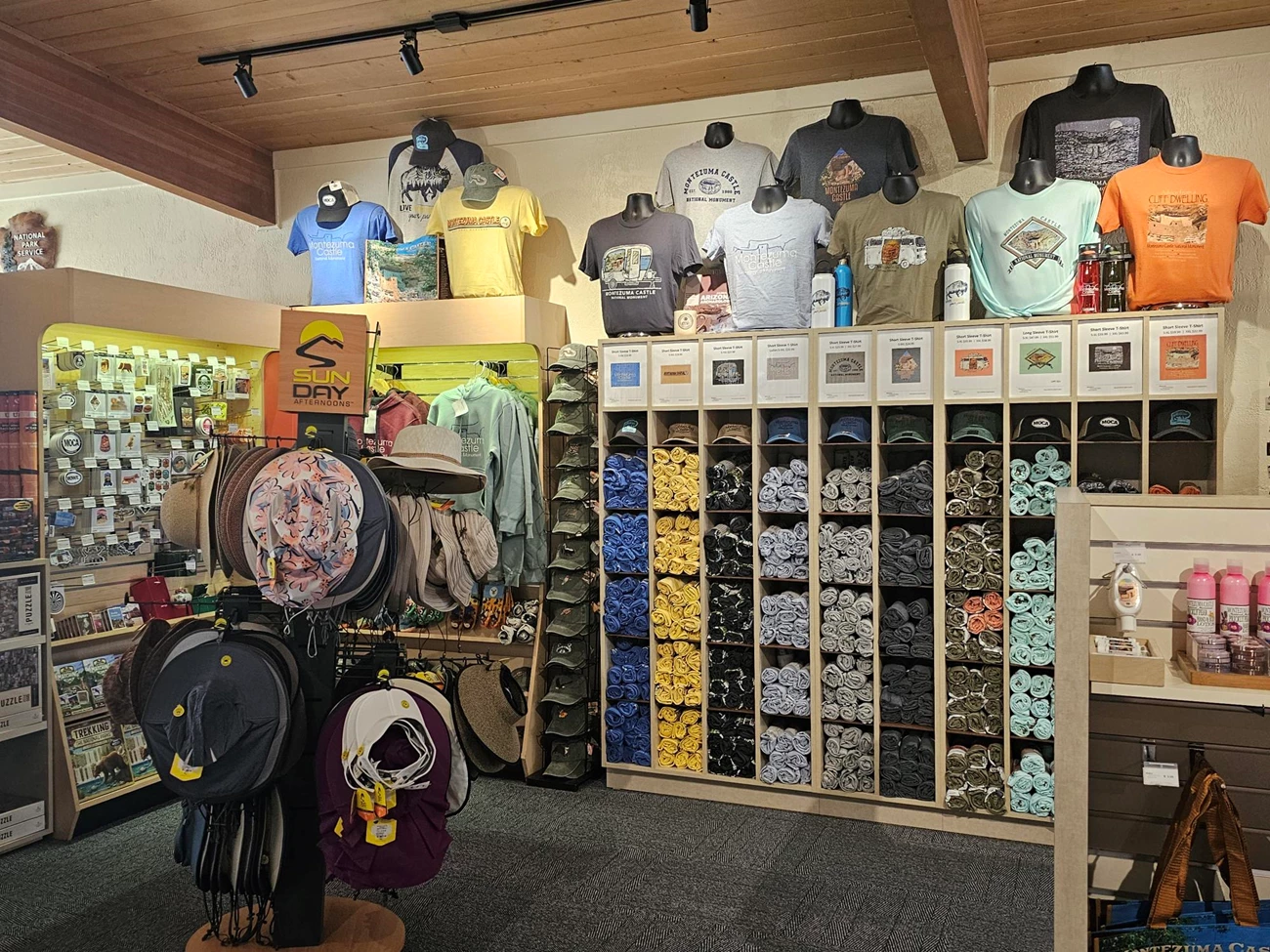
The park store is operated by Western National Parks (WNP), an official nonprofit partner of the National Park Service dedicated to supporting visitor experiences and the educational mission of Montezuma Castle National Monument. The park store has a wide range of books apparel, arts and crafts, and other items available for sale. These products complement your park experience and support the park’s interpretive themes. The park store is located at the visitor center, or you can visit the online park store Western National Parks store.
Arts and Crafts
June Pino Western National Parks Association Acoma PotteryOne of the oldest continuously inhabited communities in the Western hemisphere, the Acoma Pueblo—also called Sky City—is 350 feet off the desert floor and over one thousand years old. Since the 1700s, Acoma potters have made large, thin-walled ollas (water jugs), slipped in pure white and decorated in red and black. After the railroad came through in 1880, the Acoma people began making smaller pots so tourists could fit them into their suitcases. Acoma pots are made from local slate-like clays. Many potters inherit family clay beds, where they pray and sing to Mother Earth. Their primary clay is naturally gray; the white slip which coats the entire pot is made from kaolin, a sediment of microscopic organisms that once lived in an ancient sea covering the Southwest. To make the pottery strong, the potters mix ground pottery shards or volcanic ash and water into the fine powdered clay. When fired, these clays produce a very white color. Traditionally the Acoma use both mineral- and vegetable-based paints for their designs. The characteristic white backgrounds allow the Acoma potters to produce crisp black images as well as rich polychrome designs.
Adelle Nampeyo Western National Parks Association Hopi PotteryHopi pottery gets its glow from the use of specific clays—gray clays which turn shades of apricot when fired and yellow clay which turns red. Minerals in the clay create uneven but lovely golden patterns when fired. Pots may be slipped or unslipped with the same clays. Minerals are mixed with Rocky Mountain beeweed to create black paint and yellow clay slip for red paint. Hopi pots tend to be squat—seed jars, open bowls, and water jugs are often much wider than they are tall—but the potters do create cylindrical vases as well.
Anderson Peynetsa Western National Park Association Zuni PotteryAncient designs drawn with black, brown, and red paint are the hallmarks of Zuni pottery. Most pieces are slipped in white or red with rainbirds, flowers, feathers, rosettes, cross-hatching, and scrollwork. The designs are inspired by museum-quality historical references and so time consuming that most modern pieces are fired in electric kilns to avoid the problems inherent in outdoor firing.
Western National Parks Association Grandmother KachinaHopi katsina dolls (or kachinas) are carved representations of the katsinam, who are spirits of ancestors, plants, animals, and everything else in the Hopi universe. Katsinam encourage fertility, health, and well-being. Each katsina doll represents a specific katsina spirit and has a special role in Hopi society. These characters are identifiable by their attributes in even their simplest forms. Grandmother Katsina, for example, is customarily presented to all infants when they are born, and can be easily recognized by her rosy cheeks.
Jacob N. Warner Western National Parks Association Old Laguna Mudd HeadTraditional katsina dolls are carved in simple flat or rounded forms, and are typically hung on walls. Many contemporary katsina dolls are designed for collectors, and are carved in a variety of standing figural styles.
Western National Parks Association Zuni FetishesZuni ceremonial fetishes are profoundly symbolic, with meaning invested in everything from color to animal to stone. The bear, for instance, is a healing fetish that represents strength and self-knowledge, while the frog is a fertility fetish othen kept by the bed of women hoping to become pregnant. Fetishes may carry a bundle of items, which are intended to protect and feed the fetish itself. Fetishes are not always signed by the carver because the Zuni notion of community purpose discourages such personalizations. Carvers have distinct styles, however, and often can be identified by this alone. Many people carry fetishes close to their hearts for their healing qualities.
Western National Parks Association Tohono O’odham BasketryThe Tohono O’odham are the most prolific American Indian basket weavers working today, with more than 300 active weavers. These weavers number far fewer than in the past, however, when all O’odham women learned to weave baskets for utility, ceremony, and trade. Although weaving has traditionally been done by women, O’odham men have always participated in basket production by gathering basket materials. Today, as the Tohono O’odham strive to maintain their traditions, it is becoming increasingly common for men to weave in addition to gathering supplies. Razor-sharp beargrass is shredded, bundled, and wound to produce the strong inner coil. Patterns are woven around and through this coil using sun-bleached white or unbleached green yucca as well as the difficult-toprepare black devil’s claw |
Last updated: June 18, 2025



